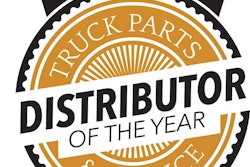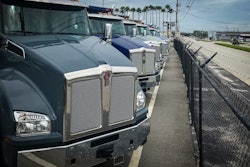By Bill Wade, Wade & Partners
Millennials. We hear the term all the time. But while we as an industry have been busy ignoring them, they suddenly are the most important sector of what used to be called ‘middle management,’ and some primary marketing targets. But wait, there’s more.
- Gen Y Millennials– 90s kids (born in 1990s or earlier)
- They remember the 1990s and early 2000s.
- They saw technology change slowly to what it is today. From Win 95 – Win 10, crappy cellphones to the iPhones we have now, etc. They are basically kids of the pre-social media era.
- Gen Z Millennials – Post-90s kids (born in the early 2000s and are mostly teenagers today)
- They don’t remember the late 1990s and early 2000s because they weren’t born yet.
- Generally are unaware of history (of anything).
- They never lived without the Internet, were practically born with iPhones, used tablets in kindergarten. Kids of the Instagram era.
Why even bother with this? Because Millennials (20-36 years old) are bound to actively affect our short-term future:
- Involved in 85 percent of B2B purchases;
- The final buying authority 35 percent of the time…
- Will be growing past 50 percent by 2020.
- The Amazon (AMZ) phone app is (statistically) their most valued (and frequently used) tool.
Most importantly, they want their ‘Amazon B2C buying experience’ at the office. Amazon owns our Next Generation Customers (NGCs). Sales reps, distributors, wholesalers, service providers, manufacturers: will you rally to be first with solutions for your NGCs needs?
What, exactly, do we need to create to survive and thrive?
Fleet purchasers, technicians, parts managers … routine calls by reps are not valued. NGCs want fast, first-hand, right answers, not a relationship. This is a critical insight, as many in the parts- and-service business think that relationships are our traditional industry’s primary competitive differential.
Reps must master interacting electronically (texts, email, phone, virtual meetings, and soon: curated video clips). Make visits only as requested.
My partner Bruce Merrifield puts this succinctly: “These digital natives want to do rebuys fast, via the net, 24/7. Order takers are 9 to 5, Monday to Friday slow-me-down inconveniences. Co-create custom web interfaces starting with the most, net-profitable customers for reordering. When digital, self-servers need access to human expertise do you have 24/7 ‘talk (text) to us’ button? Who will provide the experts residing anywhere on the planet?”
For one-off needs, NGCs want 24/7 immediate access to the universe of product options — not just the one that their ‘regular’ distributor stocks. As this change accelerates — with groups, associations or outside investors — will you participate in creating a channel marketplace that out-performs Amazon Business’ universe of self-organizing resellers?
If an item is found (wherever), can NGCs one-click buy it with Amazon fulfillment assurances? Suppliers and distributors need to figure out how to co-create seamless, omni-channel solutions. We must have the analytics to create all-win, sell-direct-to-multiple-channel scenarios.
NGCs will know the best price on the net (from resellers without your selling overhead costs). To prevent getting stripped of your expertise without matching lower prices, what new service-unbundling terms and comp plans will you adopt?
“Information technology and business are becoming inextricably interwoven. I don’t think anybody can talk meaningfully about one without talking about the other.” ~ Bill Gates
Different selling models for different customer segments
Merrifield again says, “Reps taking care of all accounts is over. We must define net-profit-dollar boundaries for different selling models/segments. Specifically: 1) Minnows; 2) traditional rep calling; 3) brokerage and bid; and 4) Enterprise, team-selling of integrated, replenishment contracts.”
Do all employees know (by heart):
- The top-five, most net-profitable customers?
- Your top-five, most-promising, net-profit-growth, target customers?
- Why and how to work to improve specific service metrics for these accounts?
- How to dynamically give both preferential and exceptional service to top-10 accounts?
- How they, and all stakeholder groups, will economically benefit from doing all of the above?
How customer-centric is your firm (branch)?
One certain requirement: better analytics. Without line-item, cost-to-serve analytics, channel allies won’t be able to agree on all-win innovations to meet digital buyer needs. This is not an academic exercise. Remember Amazon’s mission: be the “Earth’s most customer-centric company.”
Amazon increasingly is! Your firm can grow faster and more profitably through next-level, customer-centricity. Make sure all employees can answer and act on the following questions:
- What percent of your net-profits do the top 10, and the top 10 percent, of your customers give you?
- Within the top 100 accounts, can some customers be sorted into niches based on what common goods they buy, and how (peculiar service needs) they buy them?
- What specific, service metrics do your most profitable customers (and best niche of customers) desire? NUMBERS … not anecdotes.
Wade & Partners’ research reveals customers vary massively in their purchasing maturity and effectiveness. The least-effective are price buyers. Wiser ones want basic service-excellence guaranteed before focusing on price. And, 2-5 percent of your customers (usually large and/or fast-growing due to innovation) are looking for a supplier to partner with them.
They want to move down the buying/selling cost-curves together on a win-win basis (like McDonald’s with its distributors). But, it takes a consulting team to believe, speak, and sell these solutions. A rep’s role on the team will depend on what each customer prefers (customer-centricity!).
- Can the team explain how you identify, target, and sell these accounts effectively?
- Does everyone believe that by inventing better service-value for best customers, you can better retain, penetrate and potentially partner these accounts?
- Necessary: Ambition, Analytics and Execution Plan?
There can be no dispute that radical change in the truck parts and service business is no longer sneaking up on us. Are you curious and brave enough to improve on existing management beliefs
“I’ve always been at the intersection of computers and whatever they can revolutionize.” ~ Jeff Bezos, CEO, Amazon.
It’s important to note that Amazon Business says that it is not trying to build an “Amazon.com-like experience” with its B2B sales platform. Instead, it’s asking B2B customers what they need, what their pain points are, and what the company can do to help solve those challenges.
Funny, I think of this approach as the essence of any ‘Amazon.com-like experience.’
This just in: Amazon now using autonomous Artificial Intelligence (AI) to determine the stocking plan for its warehouses, many of which are a 1,000,000 sq. ft. This results in models that achieve greater SKU density and more efficient picking while adapting itself to new products, changing customer preferences, etc., in real-time. I wonder if they will scale this for smaller DCs?
Interesting canary in the coal mine — Car-dealer sales reps are now turning over at the rate of 100 percent per year. Customers know too much about new car prices from the net. Profits and commissions on new cars are fading. Will our commodity profits and branch bonuses be similarly affected by 2020?
Get customer and SKU profitability analytics to answer, directly and indirectly, the critical questions above. For a generic execution-plan, request the new “Core Renewal Roadmap” from myself and Bruce Merrifield. It is an excellent overview of how to make analytics work NOW!
Bill Wade is a partner at Wade & Partners and a heavy-duty aftermarket veteran. He is the author of Aftermarket Innovations. He can be reached at [email protected].












